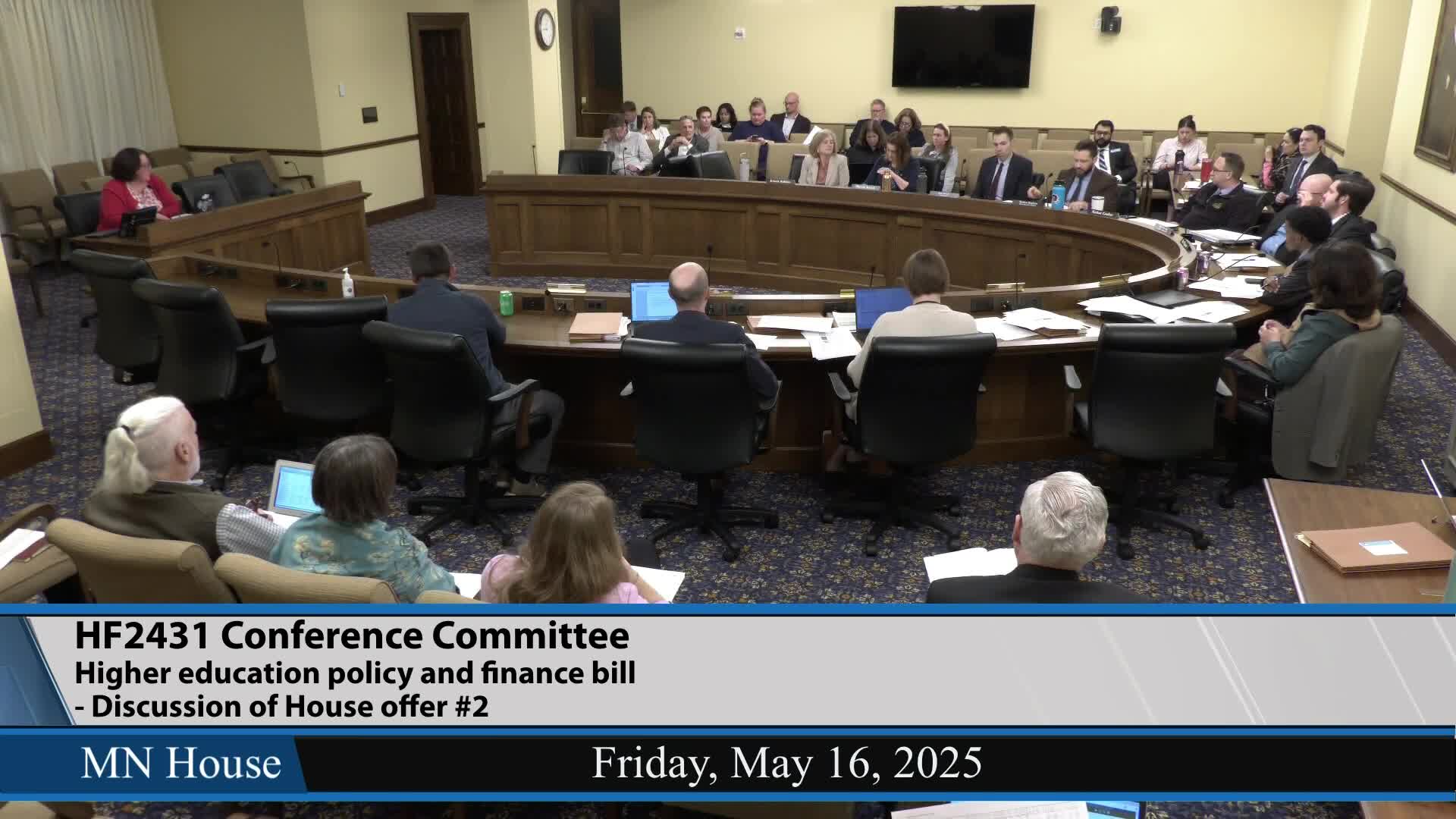State panel debates impact of negative SAI on vulnerable students' financial aid
May 17, 2025 | 2025 Legislature MN, Minnesota
This article was created by AI summarizing key points discussed. AI makes mistakes, so for full details and context, please refer to the video of the full meeting. Please report any errors so we can fix them. Report an error »

The Conference Committee on HF2431 convened on May 16, 2025, to address significant issues surrounding the state grant program and its implications for students in Minnesota. The meeting highlighted discrepancies in financial aid data and the potential impact of recent policy changes on vulnerable student populations.
The session began with a discussion regarding the percentage of grant recipients affected by the negative $1,500 Student Aid Index (SAI). Confusion arose when committee members noted conflicting figures: one testimony indicated that 40% of recipients faced this negative SAI, while another suggested the number was only 20%. This inconsistency prompted concerns about the accuracy of the data being presented, especially since this was the first year such a policy had been implemented.
Miss Fergus, a key participant in the discussion, clarified that the 45% figure referenced included students with an SAI of zero or lower. When excluding those without a true negative SAI, the percentage of students impacted dropped significantly. This clarification was crucial, as it underscored the need for precise communication regarding financial aid statistics.
The committee also addressed the broader implications of the negative SAI policy. Miss Fergus emphasized that the state has historically aimed to protect the lowest-income students, who are most in need of financial assistance. She expressed concern that recoding the negative SAI could lead to abrupt notifications for students, potentially stripping them of $1,500 in aid with little notice. This change, she argued, would exacerbate the financial vulnerability of these students.
Chair Rehrigg raised concerns about the financial sustainability of the state grant program, noting a projected $239 million deficit and the significant costs associated with the new policy. He highlighted the challenges posed by recent fiscal decisions, including tax increases and spending that have led to a substantial budget shortfall.
The meeting concluded with a call for further clarification on the financial aid data and a recognition of the complexities involved in balancing state budget constraints with the need to support students effectively. The committee's discussions underscored the critical intersection of policy, funding, and student welfare in Minnesota's higher education landscape.
The session began with a discussion regarding the percentage of grant recipients affected by the negative $1,500 Student Aid Index (SAI). Confusion arose when committee members noted conflicting figures: one testimony indicated that 40% of recipients faced this negative SAI, while another suggested the number was only 20%. This inconsistency prompted concerns about the accuracy of the data being presented, especially since this was the first year such a policy had been implemented.
Miss Fergus, a key participant in the discussion, clarified that the 45% figure referenced included students with an SAI of zero or lower. When excluding those without a true negative SAI, the percentage of students impacted dropped significantly. This clarification was crucial, as it underscored the need for precise communication regarding financial aid statistics.
The committee also addressed the broader implications of the negative SAI policy. Miss Fergus emphasized that the state has historically aimed to protect the lowest-income students, who are most in need of financial assistance. She expressed concern that recoding the negative SAI could lead to abrupt notifications for students, potentially stripping them of $1,500 in aid with little notice. This change, she argued, would exacerbate the financial vulnerability of these students.
Chair Rehrigg raised concerns about the financial sustainability of the state grant program, noting a projected $239 million deficit and the significant costs associated with the new policy. He highlighted the challenges posed by recent fiscal decisions, including tax increases and spending that have led to a substantial budget shortfall.
The meeting concluded with a call for further clarification on the financial aid data and a recognition of the complexities involved in balancing state budget constraints with the need to support students effectively. The committee's discussions underscored the critical intersection of policy, funding, and student welfare in Minnesota's higher education landscape.
View full meeting
This article is based on a recent meeting—watch the full video and explore the complete transcript for deeper insights into the discussion.
View full meeting
